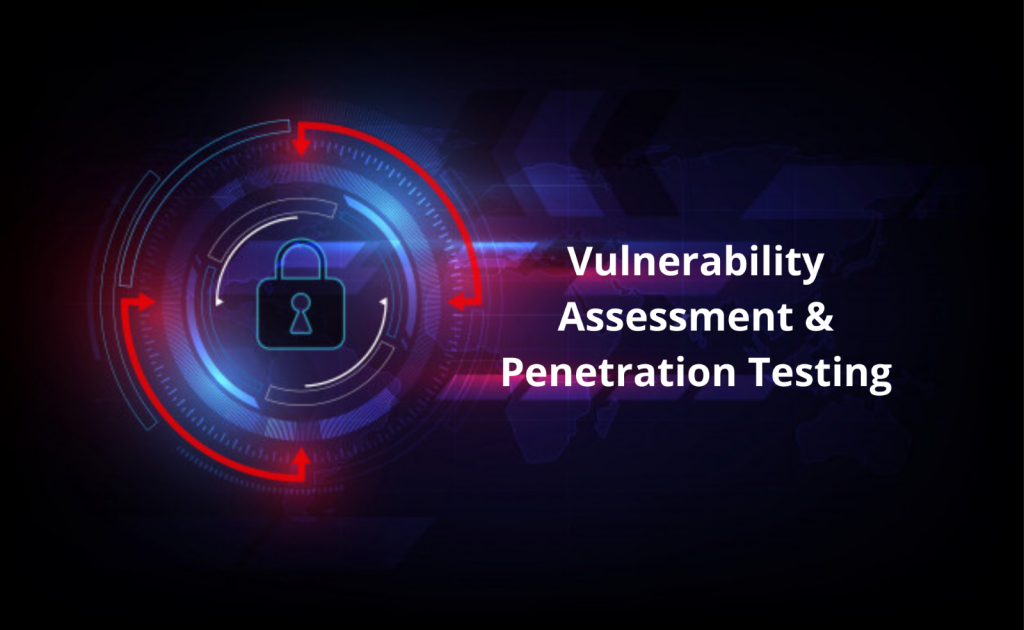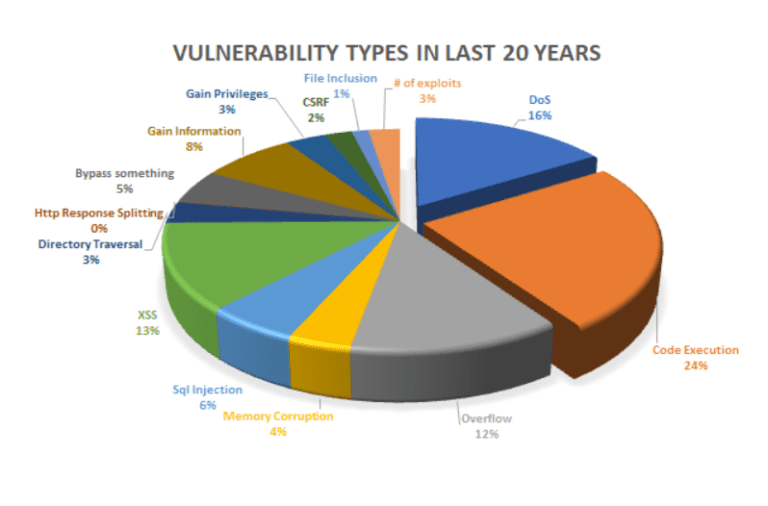
About VAPT:
Vulnerability Assessment & Penetration Testing. It is a security testing to identify security vulnerabilities in an application, network, endpoint, and cloud.
Both the Vulnerability Assessment and Penetration Testing have unique strengths and are often collectively done to achieve complete analysis. Vulnerability Assessment scans the digital assets and notifies organizations about pre-existing flaws. Penetration test exploits the vulnerabilities in the system & determines the security gaps.
Vulnerability Assessment focuses on internal organizational security, while Penetration Testing focuses on external real-world risk.

VAPT Working Process:

VAPT is carried out in two parts, Vulnerability Assessment, and Penetration Testing. Workflows for both are quite similar but take place distinctively.
Vulnerability Assessment is the method used by VAPT services providers to examine the key information assets of your infrastructure. The typical workflow for this goes like this:
- Information Gathering: In this phase, the testing team will gather all the useful information about the infrastructure, system, application, network, and the concerned staff. This help to make a suitable test strategy.
- Scanning: The ethical hacker begins testing the networks and machines to identify potential attack surfaces. This involves gathering information on all machines, users, and services within the network using automated scanning tools. Penetration testing typically undertakes three types of scans.
- Vulnerability Detection & Vulnerability Analysis: All the available and collected information about the network infrastructure and the IT systems is analyzed thoroughly. The information collection is performed through both manual and automated tools. A model of the simulated attack is created based on this analysis. Based on the information analysis, the key areas to target are determined in this phase. Both manual and automated testing techniques are used to create a list of vulnerabilities to target.
- Exploitation: The vulnerability of the system is tested against simulated attacks. The security protocols are tested by tearing through the security layers and getting access to the systems. The process tests the strength of the entire security systems.
- Reporting: A detailed report containing a summary of the test and the list of vulnerabilities that can be exploited is finally presented to the client by the VAPT expert. This tells them the present situation of their security systems and recommends the ways to fortify them.
Primary Benefits Of Performing VAPT:
- Delivers a detailed view of potential threats within the target project.
- Protects data from outbreaks.
- Identifies configurations’ faults and ambiguities that lead to cyber-attacks.
- Protects applications and networks.
- Defines the risk level.
- Ensures reliability and robustness of applications.
- Safeguards unauthorized access and prevents data loss.
- Accomplishes compliance standards.
Our Company Services:
Vulnerability Assessment:
Our experts conduct internal and external scanning to identify potential security gaps.
Penetration Testing:
Our experts create an attack scenario to explore the exploitable vulnerabilities to identify weakness and evaluate the security of a system. Pen-testing service leads the industry in web application penetration testing, identifying vulnerabilities in various programming languages and environments.
Specialties:
Contract Research Organization, Clinical Data Management
Reference:
For further clarifications or support, please write to contact@paradigmitcyber.com

